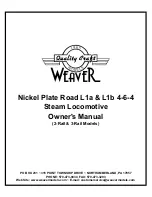
®
EN
22
45º
Up
Aileron
Wind
Direction
Down
Aileron
Taxi 45 degrees into the direction of the wind.
Factory Settings for the Control Horns and Servo Arms
The illustration shows recommended hole settings in the servo arms and control
horns.
Elevator
Ailerons
Rudder
Nose Gear
Arms
Horns
Flying with the Optional Float Set
IMPORTANT:
Only install the floats if you are comfortable flying your aircraft
and have repeatedly taken off, flown and landed with success. Flying off
water poses a higher risk to the aircraft because the electronics can fail if fully
immersed in water.
Always ensure the floats are correctly secured to the fuselage prior to taxiing
or attempting takeoff.
To taxi on water:
• Use throttle to move the aircraft forward and steer with the rudder stick.
• The aircraft will naturally try to face into the wind when taxiing. Taxi 45
degrees into the direction of the wind, if necessary, never perpendicular to
the wind. The aircraft may flip over if wind gets under the upwind wing.
• Use aileron to hold the upwind wing down.
To take off from water:
• Steer with the rudder to turn into the wind and slowly increase the throttle.
• Keep the wings level on the takeoff run.
• Hold a small amount (1/4–1/3) of up elevator.
• The aircraft will lift off once flying speed is reached.
To land on water:
• Determine where and in which direction you wish to land, preferably into
the wind.
• Fly down to a couple of feet off the surface of the water.
• Reduce throttle and add up elevator to flare the aircraft and set down gently
on the surface.
WARNING:
NEVER attempt to retrieve a downed aicraft from the
water alone. Always enlist assistance and use any available safety
flotation devices.
Always fully dry the aircraft after flying from water.
IMPORTANT:
If water splashes into the fuselage at any time, bring the airplane
to shore, open the battery hatch and immediately remove the water. Leave
the battery hatch open overnight to let the inside dry and to prevent moisture
damage to the electronic components.
CAUTION:
Never attempt to fly the aircraft if the electronic
components are wet. Failure to fully dry the aircraft can cause the
electronic components to fail, which could result in a crash.







































